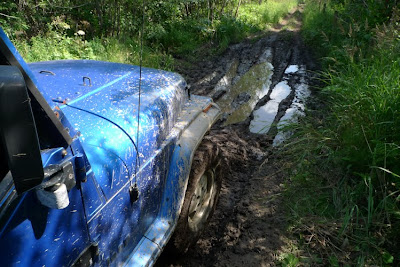Ever since medical school, I've always felt skeptical at how anesthesiologists like to compare their work to that of a pilot flying a commercial airliner. How arrogant, I thought. Airline pilots are much cooler people.
Now I am starting to see the reasoning for their altered egos.
Doing anesthesia IS very much like flying an airplane, and I think that's why it's starting to really appeal to me. You have to be very anal retentive, and quite organized and thorough in your approach. Before each case, you go through a mental checklist with your pre-op assessment to build a detailed operative plan, much like a flight plan before each takeoff. You consider all variables and options and balance all risks and benefits, all the while trying to put your freaked out patient at ease.
Then you enter your work station, the OR. You again follow a practiced routine in checking all your monitors and equipments. Your work space is ladened with all sorts of bells and whistles, and you can be as complete as you need to be in monitoring all parameters of the patient during the operation. In certain types of cases such as ears-nose-throat surgeries, you lose access to the patient and the airway once the case begins. You are then depended on your monitoring as you "fly by instrumentation" to ensure a safe and peaceful journey to your patient in order to live up to the promise that you have given them before the case began.
Once the case is on the way, you essentially keep an eye on the patient by a series of second-hand parameters. Everything is a surrogate, but with enough experience you build a good understanding of what is happening to the patient at each point in time with those surrogates. The respiratory rate went up, oh he must be in pain, let me give him a little more pain control. He's fighting the ventilator, oh he must he "light", let me top up his anesthetic. The goal of the exercise is to do everything preemptively. For you want to foresee what might happen and prevent it before it ever does, much like an experienced pilot foreseeing any wind turbulence and change altitude to ensure a steady and smooth journey.
Finally, when all is said and done, you have the landing, or emergence from anesthesia. Careful planning make for a smooth landing, and proper timing of your reversal agents and stopping of anesthetic agents make for a smooth dreamy wake from surgery as if the patient had just taken an afternoon nap. When things are done beautifully, the result is a very rewarding experience for both the patient and the anesthetist. With modern medicine, it is amazing what you can do to a patient under the right anesthetic without them experiencing a frightful and painful experience such as surgery.
Anesthesia really is quite a neat specialty. With powerful drugs and effective monitors, you can pretty much control every facets of your patient's physiology. But more rewarding, however, is that you are in the field of relieving suffering, whether that suffering is physical pain or emotional fear. From the very onset when you go and greet a patient, you are exerting your therapeutic relationship in an attempt to calm and reassure them from all the fears and worries they have of their surgery. Show a sense of confidence, and the patients will feel that they're in good hands. Toss in some humor, and they might relax a little bit more. Hold their hands, and they will feel that they are cared for. All this, before you have even given them a single drop of medicine, and they are already ready to begin.






















































